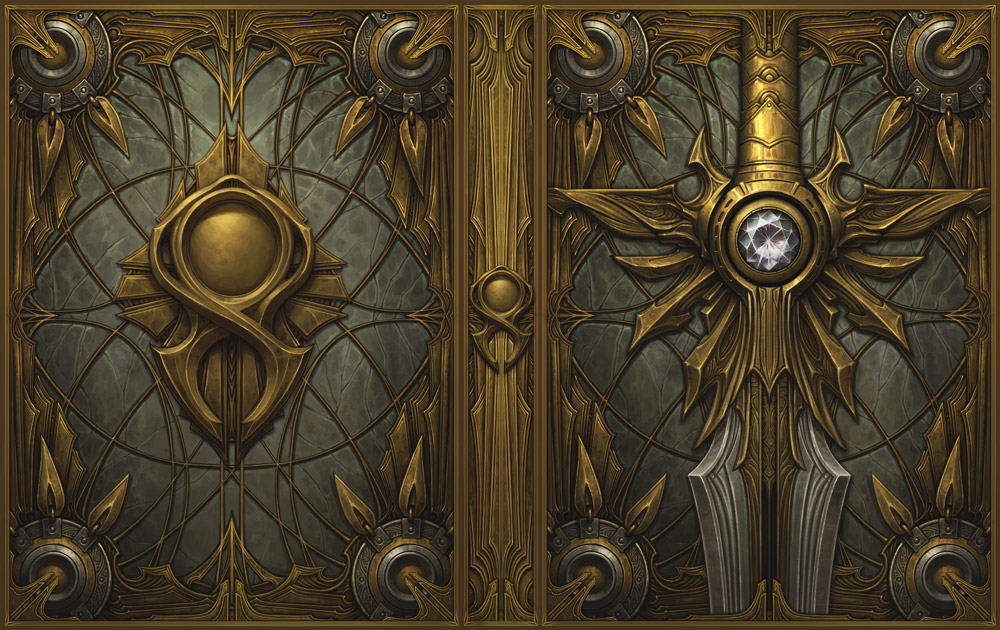IGN interviewed Jay Wilson during the Diablo III Beta Press Event to talk about the Skill system (now gone with the wind). Jay Wilson makes digesting the reason behind its removal a more acceptable decision.
Jay: “I feel that in a lot of ways the current system has more choice involved in it because that finite limit of how many skills you can take versus the number that you have means that you have to make a very restrictive choice, so we focused a lot more on restricting the number of skills you have and having that be the interesting choice, as opposed to skill points, which are really commitments before you even know what you’re committing to.”
My Two Cents
Sure this game seems far less what Diablo II was, but as much as people praises Diablo II — it had tons of krappy game mechanics. I have one powerful example of how Diablo II was terrible. And that’s just one game mechanic out of many that were poorly done for a game shipped in 2000.
I have mentioned it a few times before, but here it is for those who just caught up. This is merely Normal mode. Go to Duriel. He has massive hit points, and probably two or three hits after you go in your character is dead.
So the game mechanic here wasn’t to go one on one on Duriel. It was about kiting him. However, from time to time he will spam that Holy Freeze and slow down your movement, at which point you were fleeing for your life as best you could, or you would open a town portal to flee. This you experienced in most boss encounters, but especially Duriel and Diablo for me: stack up a bunch of health pots and mana pots. And over 20 town portal scrolls. Hit Duriel a few times, health pot, hit Duriel, heal pot. Hit Duriel (Holy Freeze). OMG town portal. Stack up town portal scrolls, health pots and mana pots. Teleport back in. Rinse and repeat.
Seriously. I don’t understand the glorification of Diablo II. Yes, Diablo II had many great features, but it was plagued by poor game design decisions and poor game mechanics here and there. Jay Wilson and his team are making an excellent game evolve into something much better. They are identifying where Diablo II was wrong, and improving those. Where it didn’t make sense, they are replacing things making them more creative. So you love to set skill points in a slot every time you level up. Is it because you really know what you are doing, or because you are addicted to that? Would you feel the same way if each point did absolutely nothing and merely gave you the illusion?
How did you know each point was really doing anything? So I created a Sorceress and put all my skill points on a couple abilities: Blizzard and Ice Bolt / Ice Spike. Then I faced Duriel. Guess what? It took me a heck of a time to kill him. He is immune. There you go. Skill Points is not necessarily a good thing when the game is designed to have monsters with resistances. Mostly when it is your first time playing through the game. You feel punished to complete the game with your poor skill point-assignment decisions until you create a new character and build it based on your experiences the first time.
As Jay Wilson said, I committed to build a Sorceress with frost spells and focused all my skill points in that tree, in those two spells, before even knowing what I was committing too. I hit a wall of bricks with Duriel who is 50% immune to frost spells in normal mode. In Nightmare and Hell modes he has much stronger frost resistances.
So now the skill points system is gone. Runes are the way to go. Selecting Skill Points didn’t show much of a difference in your spells. Runes now show a visual difference to your choices, and as you level up — your choices become even more powerful.
Win-win on my book. Good riddance Skill Points System.
Bashiok On Skills System Gone
Bashiok
With these two skills we’re beginning to develop some combat depth for the player. Use Magic Missile when you’re facing one enemy, use Arcane Orb when you’re facing multiple enemies. But you may also want to use Magic Missile if one enemy is a “high priority target” in a group, and you want it to die quickly. In this simplified example players can still defeat a horde of enemies by casting Magic Missile multiple times, or they could defeat a single large enemy by casting Arcane Orb multiple times, but that wouldn’t be as efficient as a player who uses the right skill for the right situation. Ok so that basic layout of combat depth out of the way! With skill point spending your skills get better as you invest points into them. The problem is that this destroys combat depth. If after pumping a bunch of points into Magic Missile it now deals 70 damage to a single enemy, assuming my enemies have any reasonable health, then Magic Missile becomes a better choice than Arcane Orb even in group situations. If after pumping a bunch of points into Arcane Orb it now deals 45 damage, then it deals more damage than Magic Missile to single targets. Now rather than using the right skill for the right situation, I’m using the skill I’ve put all my points into. Skill point spending has eroded away combat depth. Why did we go from 7 skill choices to 6? Diablo III emphasizes build customization. We feel that 6 skill choices actually creates more build diversity than 7. Why? Well for any given set of options, the greatest number of combinations exists when the number of choices you can make is close to half the number of options you have. Some of you may remember a high school math problem like this: There are 12 differently colored marbles in a bag. How many different color combinations can you get by choosing X marbles? Well as it turns out the solution for various values of X are: 1 marble: 12 different color combinations The greatest number of possible combinations happens when you are choosing 6 from a possible 12. You may be asking what 12 has to do with anything as classes all have over 20 skills available to them… This is true in theory, but in practice players tend to (and really should) pick up skills to fill different roles so they can be effective. Categories such as single target, area of effect, auto-targeting, debuff, defensive, group buff, escape, crowd control, 2-minute ubers, pet skills, etc. etc. Players generally take at most two (and often one) skill to fill any particular role. For example, the Wizard has Ice Armor, Storm Armor and Energy Armor, but I don’t think anyone is going to take all three (though maybe somebody will take that as a challenge and prove me wrong), most players will choose one Wizard Armor spell (note that this can change dramatically with some rune effects). If we look at each class, depending on how you count, you get anywhere from 8-12 different types of skills. So we err on the high side in our category estimate (12) and that means 6 is a pretty good number to maximize build variety. It’s important to note that we’re not just talking about you and your friend having Wizards with slightly different skills, we’re talking about you and your friend having 6 skills that are different in functionally significant ways. Closing remark! When we pull math out like this I’m sure somebody will point out that if our only objective was to maximize build combinations we’d have allowed people to also choose 6, 7 or 8 passives rather than just 3. So I’ll counter by saying maximizing build combinations is not our only objective. We also want our system to have aesthetic flavor, to be simple to understand, and to have the passives in particular feel impactful. We have many different goals that we take into account when making any design decision. In the case of active skills, we felt the increase in variety was one of many good reasons to go from 7 to 6. So how many skill combinations are there now? Well taking into account 6 active skills, all the rune combinations, and 3 passives we currently expect each class to have roughly 2,285,814,795,264 different build combinations. That’s not taking into account skill types for ‘ideal’ builds, but that’s always been a big part of the fun of experimenting (and longevity for Diablo II) – finding a build that shouldn’t work, and making it.” —Source
(Note: again, this is a supplementary explanation. We’ve gone over some of the other reasons elsewhere, but this is specifically targeted at those of you here who feel strongly that 7 means there would be more build diversity than 6)
2 marbles: 66
3 marbles: 220
4 marbles: 495
5 marbles: 792
6 marbles: 924
7 marbles: 792
8 marbles: 495
9 marbles: 220
10 marbles: 66
11 marbles: 12
12 marbles: 1 (there’s only 1 way to choose 12 marbles from the 12 in the bag)







Amen to that.
The Duriel part was absolutely awesome in crapiness. I always feared that part because I knew I had to take a bunch of Town portal to run back to him each time…
I remember the time when I killed duriel only with my Necromancer curse that sended back a part of the damage we were taking ^^ I took at least 15 death for me to kill him but I managed to took him down. And I have another exemple with him that was completely stupid, in multiplayer a necromancer juste prisonned Duriel with lots of wall of bones that he spammed while the other took down duriel with ranged attack… that was lame.
Honestly I think they had make great improvement on that part… And.. they removed the potion spam too xD
THAT was ridiculous.
Like Diablo Hellfire… you teleport in mid fight, you come back, oh, bone cage around you ! oh, hellfire, oh I’m dead, Oh, just 2 seconds passed ! Nice 😀